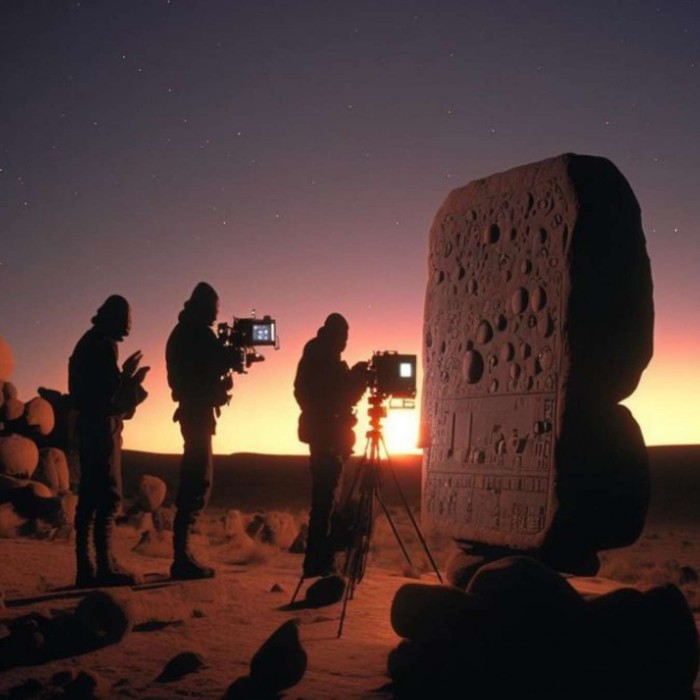Durban-born transdisciplinary artist and musician Kamil Adam Hassim, also known as Kā’Makāté, is a graduate of the Michaelis School of Fine Art. The winner of the 2019 Michaelis Prize for the most outstanding artist and the Simon Gerson prize, he’s currently completing his Master's in Fine Arts at the same institution.
We spoke to the Design Indaba Emerging Creative for 2023 about space, time and what’s up next for this year.
Tell us about your journey as an artist.
My artistic practice is the convergence of all my thoughts and interests. I see it as a paradigm that cultivates learning, and I observe my life as a continuum, therefore I would say this has been a process I have been exploring since coming into existence. My childhood dream was to become a Kung Fu master, and my adult wisdom teaches me that there is Kung Fu in all things, not just in fighting. This kind of philosophy, which I was exposed to early on, characterises my practice as my own kind of Kung Fu.
Do you have a preferred medium?
As an artist, I don't limit myself to one particular medium, but I find myself drawn to the concept of space-time as a medium for my work. The idea that space and time are interconnected and form a fabric that shapes our reality is fascinating to me, and I enjoy exploring this concept through my art, through a process of wayfinding.
My process is characterised by a spiritual sensitivity that closely mirrors what I discovered exists also in indigenous Polynesian wayfinding, from which I take great inspiration. This has less to do with notions of ‘making’ but is rather a method of navigating the space-time in which the visions I have exist. For example, I might create an instrument that explores the intersections of cultural paradigms, the flow of information and ways of interfacing with the cosmos, through improvisational music and praxis of wayfinding, such as in my final Master's exhibition in 2022, Improvisation and Healing; or I may create an installation like my current exhibition, Event Horizon, at Constitution Hill in Johannesburg, which creates a sensory experience that explores concepts related to black holes and the mysteries of the universe using light projected in an old apartheid prison cell.
Ultimately, I see space-time as a rich and multifaceted medium that offers endless possibilities for artistic exploration. By using this medium in my work, I hope to inspire a sense of wonder and curiosity in viewers, and spark conversations about the nature of reality, consciousness and the human experience.
What is your creative inspiration?
Nature is the master creator.
You state that your work explores how culture facilitates certain modes of being and environmental interaction. How has your upbringing in Durban and the experience of living in South Africa informed this approach?
Growing up as a South African person of Indian descent has made me personally aware of how the imposition of colonialism often involved the suppression of indigenous knowledge systems and the imposition of Western epistemologies. This has resulted in the loss of knowledge and cultural heritage for many communities around the world.
The intersection of art and science, as explored in my exhibition Event Horizon, offers a way to bridge these gaps and connect people to the mysteries of the cosmos, while also acknowledging the importance of different cultural knowledge systems. The exhibition seeks to create an immersive experience that allows visitors to develop embodied knowledge of phenomena like light and data, while also engaging with the complex cultural and scientific concepts associated with black holes. By doing so, it offers a space for dialogue and engagement that can help to promote a more inclusive and diverse understanding of science and its relationship to culture.
What has been a career highlight for you so far?
The 2022 Connect Africa Residency Award, where I got to travel to CERN in Switzerland and meet some of the foremost physicists and scientists in the world and see cutting-edge experiments in particle physics and more. As a long-time fan of theoretical physics, this was a dream and revolutionised my practice.
What’s up next for you in 2023? What are you working on at the moment?
I’m currently the artist in residence at the South African Astronomical Observatory in Cape Town, where I hope to embark on a collaborative project in conjunction with the astronomers, scientists and engineers there, to develop a project that explores fundamental physics, modern African astronomy and ancient indigenous cosmologies.
Read more
Photographs: Kamil Adam Hassim.







